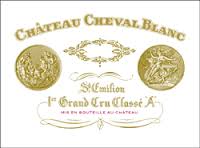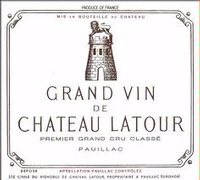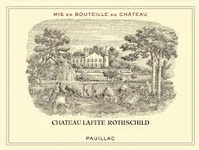On a recent Sunday evening in La Jolla, California, while the guest at a dinner organized by the San Diego chapter of the Commanderie de Bordeaux, I learned the conditions for Bordeaux in America are not as dismal as I had feared. They are worse.
 Bordeaux, for those with a short memory, was once the benchmark for American wine, particularly in California. Cabernet Sauvignon, Merlot and blends of the two were all the rage when the California wine boom got underway in the 1970s. Bordeaux, the historical home of Cab and Merlot (also Malbec, Petit Verdot and Cabernet Franc), was the model.
Bordeaux, for those with a short memory, was once the benchmark for American wine, particularly in California. Cabernet Sauvignon, Merlot and blends of the two were all the rage when the California wine boom got underway in the 1970s. Bordeaux, the historical home of Cab and Merlot (also Malbec, Petit Verdot and Cabernet Franc), was the model.
Sophisticated wine shops from that era specialized in French wine, for the most part, and the most important French wine was Bordeaux. My earliest years as a collector of fine wine were nurtured by the great vintages of Bordeaux from the 1960s and ‘70s. Wonder of wonders, even on a journalist’s salary I could afford wines from the greatest chateaux in Bordeaux, fabled wines such as Lafite, Latour, Haut-Brion and Cheval Blanc.
They were expensive for their time, but hardly beyond the reach of anyone with a decent income and a passion for wine. In the spring of 1983, for example, I purchased first-growths from the spectacular 1982 vintage for $39 a bottle as “futures,” meaning I paid in advance for wines that would be delivered after maturing in bottle for approximately two years.
A few years later, when the greatness of the vintage had been established beyond any doubt and hyped by the then-emerging Robert Parker, I added many of the same 1982 first-growths to my cellar at the stunning cost of $59 a bottle.
 A quick glance at WineSearcher.com reveals the average bottle price of 2010 Chateau Lafite Rothschild to be $1525. Chateau Latour 2010 fetches $1779 on average, and 2010 Haut-Brion comes in at $1288. The 2010 Chateau Cheval Blanc, my favorite wine from the Right Bank commune of Saint-Emilion, would set me back $1498. Even Chateau Palmer, a third-growth Margaux, has shot up from about $100 a bottle the last time I bought a case to an average of $401 for the 2010 vintage; and the fifth-growth Chateau Lynch-Bages, once among the greatest values in wine, now gets $195 for the 2010 vintage.
A quick glance at WineSearcher.com reveals the average bottle price of 2010 Chateau Lafite Rothschild to be $1525. Chateau Latour 2010 fetches $1779 on average, and 2010 Haut-Brion comes in at $1288. The 2010 Chateau Cheval Blanc, my favorite wine from the Right Bank commune of Saint-Emilion, would set me back $1498. Even Chateau Palmer, a third-growth Margaux, has shot up from about $100 a bottle the last time I bought a case to an average of $401 for the 2010 vintage; and the fifth-growth Chateau Lynch-Bages, once among the greatest values in wine, now gets $195 for the 2010 vintage.
It’s no wonder that members of the Commanderie de Bordeaux, an organization dedicated to the worship of Bordeaux, are focused on price. I was surrounded by successful doctors and lawyers who can afford expensive wine, but even they were choking on the cost of a top-notch bottle of Bordeaux.
To its credit, the Commanderie sponsors a competition each year to identify excellence in Bordeaux at $40 or less. Those wines do exist, and due to advances in viticulture and technology in Bordeaux, they have the potential to redefine value in quality Bordeaux.
 There’s one problem: demand. There is no demand for these wines. They are obscure, poorly marketed and poorly distributed. You won’t find them on most restaurant wine lists, and even if you do stumble across one of these relatively inexpensive Bordeaux in a retail wine shop, they aren’t likely to be accompanied by ratings, reviews or wine competition awards.
There’s one problem: demand. There is no demand for these wines. They are obscure, poorly marketed and poorly distributed. You won’t find them on most restaurant wine lists, and even if you do stumble across one of these relatively inexpensive Bordeaux in a retail wine shop, they aren’t likely to be accompanied by ratings, reviews or wine competition awards.
Who would plunk down $40 on an unknown wine when there is so much wonderful domestic and even foreign swill (think Italy, Spain, Argentina, Chile or France’s Rhone Valley) that is familiar and safe?
Earth to Bordeaux, we have a problem.
Read more Robert Whitley columns at Creators.com.
8
